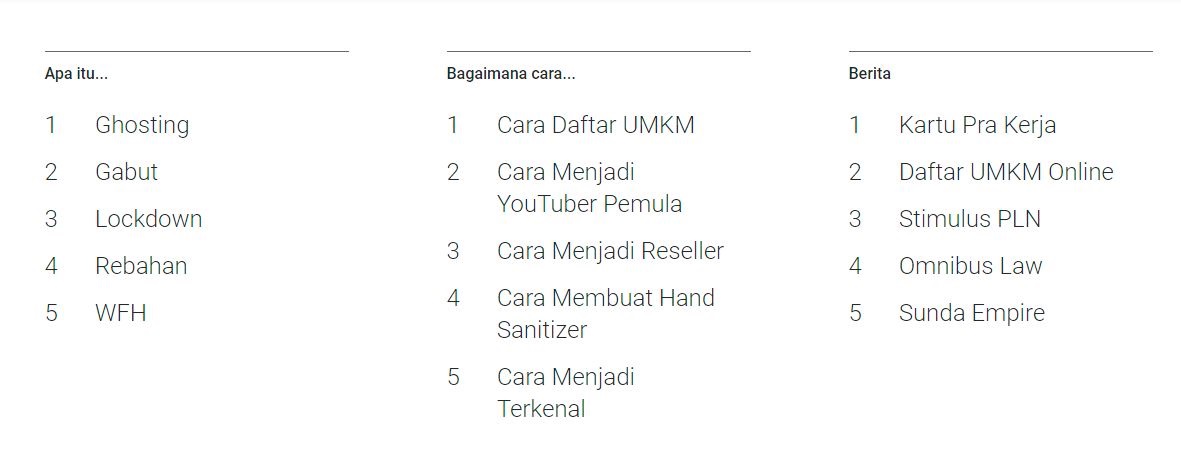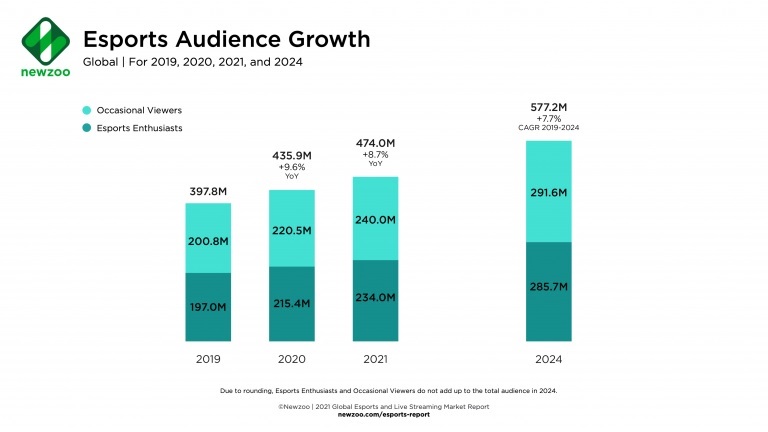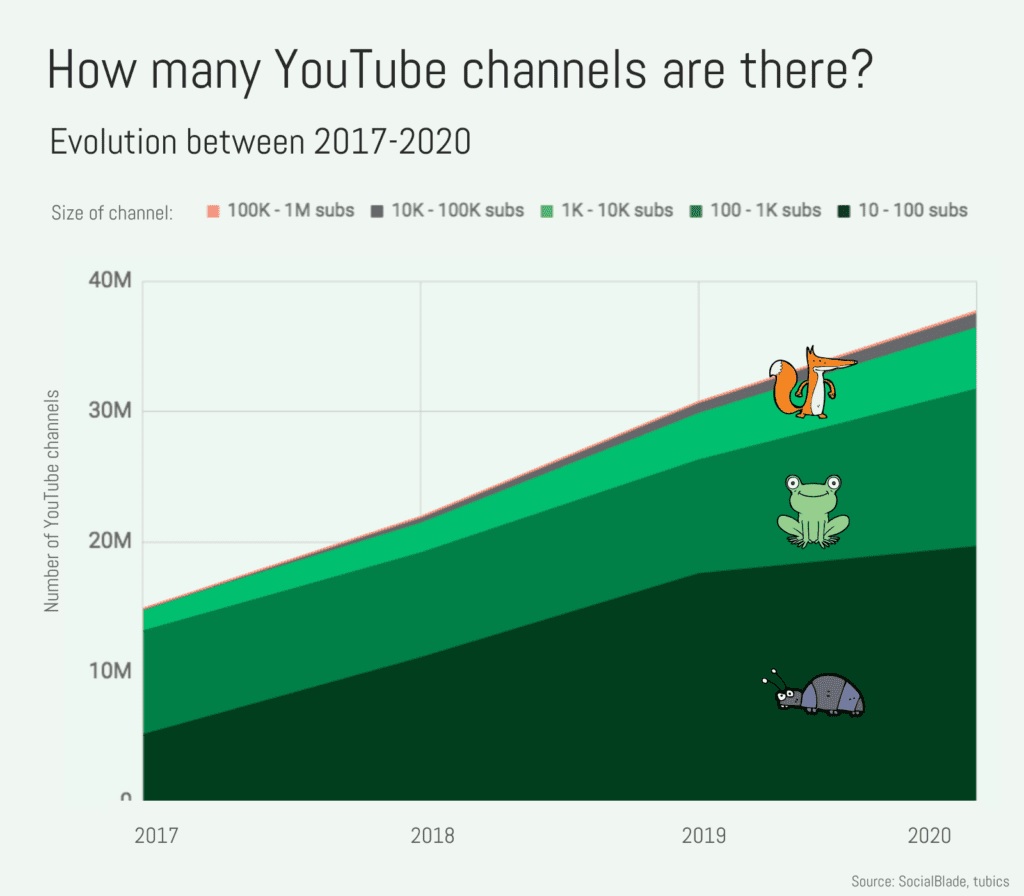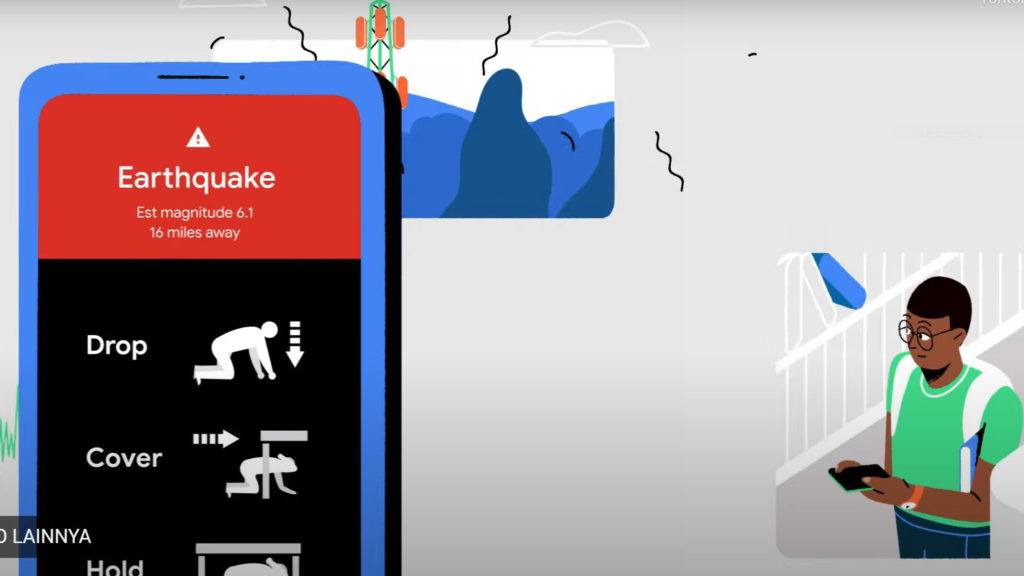Sponsorship is one of the most common sources of income for esports organizations. To attract sponsors, esports organizations usually have to maintain a growing fanbase by being active in social media, such as Youtube. Cultivating a fanbase using this traditional method can take a very long time. As a result, impatient organizations often choose to cut corners by using controversy or drama.
Unfortunately, the trend of creating exploitative content is growing and will inevitably continue to do so in the future. Let’s explore why this is the case.
The Content Creator Craze
More and more people today are becoming interested in being content creators. In fact, according to Indonesia’s 2020 Google Trends, “How to be a YouTuber” is the second most popular search in the “How to” category, while “How to become famous” was ranked fifth.

Of course, there is nothing wrong with becoming a content creator or a famous individual. After all, most Youtuber’s income is quite enormous, being able to earn millions of Rupiah per month just by uploading videos to the internet. For example, according to Kompas, Deddy Corbuzier, who is included in the list of the five most successful YouTubers in Indonesia, is estimated to have an income of around $34 thousand USD to $543.3 thousand USD (Rp.495 million-Rp7.9 billion) per month. With these kinds of numbers, who wouldn’t be attracted to a Youtuber’s income prospect?
However, as more people strive to become content creators, the level of competition in the profession will also rise. Some Youtubers might rise to the top, while some may stay irrelevant. We have seen many “OG” Youtubers hardly gain any subscribers, while several newcomers are able to become trending overnight. Therefore, it begs the question: what factors determine the probability of a content creator’s success?
According to Social Blade, the top 5 Youtubers with the largest income in Indonesia are Deddy Corbuzier, Ria Ricis, Baim Wong, Raffi Ahmad, and Atta Halilintar. Of these 5 individuals, three of them were already celebrities or considered famous before their Youtube career. However, for people who start out on Youtube from square one, they will have to work very hard to cultivate and grow a fanbase, as I have mentioned previously. Some individuals are even willing to risk their lives for the sake of creating attractive content, and this statement is not hyperbolic at all. In April 2021, a young man died after being crushed by a truck because he tried to block a passing truck. Of course, his action sounds flat-out stupid on the surface. However, he did that in the hopes of capturing a viral content that will potentially attract thousands or millions of views. A similar incident also occurred last March.
Another alternative route to fame is being an esports player. Most esports players today are getting the same idol status as professional athletes or celebrities. However, esports players or organizations will only be able to cater to the gaming audience, which is still considered relatively small. Indeed, for the past few years, the growth of esports audience does show an upward trend. By 2021, the number of esports viewers and enthusiasts in the world is estimated to reach 474 million people.

However, this figure is still incredibly minuscule compared to the scale of the total internet users, which reaches approximately 4.72 billion people. As a result, some esports players today can “get off track” by pursuing fame or growing a fanbase instead of maintaining their career in competitive gaming.
The Stiff Competition for Views
According to the law of supply and demand, the value of a product is determined by its availability and demand. If more people are interested in buying a particular good, then its price will subsequently increase. Conversely, if more people sell or provide a certain product, its price will decrease.
In the content creation industry, content creators are product providers or sellers. We, the audience, are the customers. To estimate the “supply” and “demand” of content on the internet, there are several benchmarks we can use. For example, the degree of supply can be measured by the number of YouTube channels, videos or digital articles. On the other hand, the number of internet users and watch duration can be a reflection of the market demand for internet content.
Firstly, let’s take a look at the data on the number of internet users around the world. According to Statista, by 2021, the internet penetration rate in the world will reach 53.7%, which suggests that the number of internet users reaches will reach 4.2 billion people. Comparing the internet penetration rate in 2020, 2021 sees a marginal increase of 1.3%. Similarly, since 2014, the internet penetration rate in the world has shown a steady upward trend. Overall, this might all sound like good news for future content creators because the number of audience or “demand” is predicted to continue to rise.

However, if you look at the red line in the graph above, you will see that the growth of the internet penetration rate around the world has been declining since 2017. This trend suggests that the number of internet users in the world (blue line) might be plateauing soon.
Statista also finds the same trend occurring in Indonesia as well. The number of internet users in the country is expected to peak in 2019, before experiencing a drop in the next few years.

Let’s now observe some YouTube-related data. As of 2020, there are 37 million YouTube channels globally, which increased by 23% in 2019, according to Social Blade. Additionally, 500 million hours worth of videos is uploaded to YouTube every minute. The following graph shows the growth in the number of YouTube channels from 2017 to 2020.

From the data and graphs above, we can observe that the growth rate of Youtube channels far exceeds that of the number of internet users. This trend can pose a significant problem for content creators on the internet. Going back to our analogy of supply and demand, what we have here is essentially a stagnating demand (number of viewers) but an increasing supply (number of Youtube channels). According to the analogy, a rising supply and a plateauing demand will result in lower product prices. In other words, videos become less valuable in the eyes of viewers, and competition will become much tighter.
The number of internet users is not the only metric that can be used to find trends in video consumption. We can also use the number of YouTube users. According to Hootsuit, YouTube has around 2 billion monthly active users. Given that you can still watch YouTube without an account, this figure might be even larger. Furthermore, adult viewers – who are at least 18 years old – spend about 41.9 minutes watching YouTube every day, which accumulates to 4.9 hours per week or 255 hours per year. In total, all YouTube users around the world consume more than 1 billion hours worth of video content every single day.
This figure does look rather massive. However, we have already established that 500 million hours of new videos are uploaded to YouTube every minute, which totals roughly 720 billion hours every day. Again, we observe another case where the supply (duration of uploaded content) far exceeds the demand (watch duration).
From all of these statistics, we can conclude that the Youtube space is incredibly competitive. This unfortunate state of Youtube frequently prompts many new content creators, including those from the esports world, to take shortcuts to fame by creating content with drama and controversy, which brings us to the question…
What Makes Controversial Content So Appealing?
Of course, everyone shares a different standard or taste when it comes to controversial content. What I consider controversial in my eyes might not be problematic for some people, and vice versa. Therefore, to maintain the consistency of the definition, I will limit the scope of controversy to topics that includes drama or obscenity.
According to Psych Central, there are several reasons why someone likes to watch content filled with controversy. Firstly, these kinds of content act as a distraction to the viewer’s personal problems. In other words, controversial content becomes some sort of escape from reality. Another reason why people like drama or controversy is simply because they often experience it in their own lives. These people usually don’t grow up with great relationships and are very used to experiencing conflicts.
Interestingly, biology also plays a role in determining your taste in controversy. Watching controversial content often triggers several emotions and hormones, such as endorphins, that can relieve stress or pain. A subsequent addiction to these hormones or chemicals can be developed through time as well.
In a study entitled “Social Transmission, Emotion, and the Virality of Online Content”, Jonah Berger and Katherine L. Milkman attempted to investigate the characteristics of viral content on the internet. Firstly, they found that emotional engagement plays an important role in developing viral content. Thus, inspiring or funny content is very likely to accumulate a high number of views. The researchers also found something rather amusing: content that triggers anger also has the potential to go viral.
Studies conducted by the University of Indiana also came to the exact same conclusion. However, the “anger” emotion referred here is not the one that relates to violence, but rather the drive to argue or debate. For example, if a content creator makes a video that says PUBG Mobile is a better esports game than Free Fire – or vice versa – the video is likely to be flooded with comments from hardcore fans of both games. However, you have to remember that Indonesian netizens are highly considered the most toxic netizen in all of Southeast Asia. Therefore, content creators who want to create controversy or spark debates should heavily prepare dealing with the toxicity or hate.
Other than today’s content creators, we often also see film studios manipulate viewers’ emotions. We can observe this by looking at the change in the villain’s perspective in Hollywood films. In the 1950s, the backbone of most films was the plain simple “us vs them”: heroes are good, villains are evil. There is a well-defined line between an antagonist and the protagonist. Today, however, viewers can sometimes sympathize with villains such as Killmonger from Black Panther or Thanos from Avengers: End Game. Although their actions are considered as nefarious, they do have an ulterior motive to make the world a better place.
Conclusion
With the amount of attention that esports has been receiving recently, more people, even the local government, started to show some degree of interest in the industry. Of course, having more people involved in the esports industry is great. However, competition can ultimately become stiff, and growing a fanbase can be a much more challenging task. Furthermore, after an esports team or athlete successfully grows a following, they will have to compete with non-esports content, such as music, documentaries, vlogs, etc.
As we have seen previously, the intense competition can potentially sway some content creators into taking shortcuts and produce controversial content by making highly bold contentious statements, involve personal drama, or even resort to obscenity.
Unfortunately, these cheap acts conducted by content creators are incredibly detrimental to the whole esports ecosystem. Various negative stigmas have been attached to the gaming and esports industry, which still hasn’t disappeared until this very day. However, we can’t really blame the content creators themselves. After all, the statistics do show that competition in the internet content space is extremely stiff and consequently pushes the idea of quality degradation for increased views or attention.
This article is translated by Ananto Joyoadikusumo. Featured image credit: WHYY








